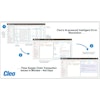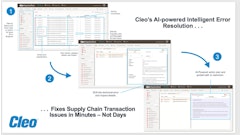
When you think of procurement, the first association is not necessarily “cool.” But here’s a radical thought: AI is poised to make procurement one of the coolest functions in the enterprise.
A recent Gartner study found that only one in six procurement teams believe they have “adequate talent” to meet their future needs. Companies seeking to recruit the best talent and use procurement strategically must have an edge – and that edge is AI.
So, let’s break down those cool factors:
Creativity
Fairly or unfairly, procurement’s image is tainted by its association with box-ticking. When many people think of procurement, they think of compliance, regulations and bureaucracy. This necessary emphasis on processes and controls can give the impression that procurement lacks creativity or flexibility. The good news is that democratizing data access and handling routine processes is exactly what AI does most efficiently, freeing up procurement people to be more imaginative and creative.
That creativity will look different in every company. It might focus on driving sustainable and ethical practices that positively impact the brand, society, and the environment. Or it could involve collaborating more closely with various departments, suppliers, and other stakeholders. Or running campaigns to raise awareness internally and externally to promote the ways that procurement is having a positive impact through measures like cost savings, risk management, innovation, and sustainability. Or simply staying on top of market trends and being more strategic.
Innovation
Using AI-driven technology is innovative by definition. However, procurement stands out as one of the best corporate use cases for Gen AI in particular. Gen AI in procurement can analyze and synthesize huge volumes of complex, unstructured text-based documents to help specialists in all types of sourcing scenarios – from scoping RFPs to making buying decisions.
The key here is learning to “partner” with AI. Complex, high-stakes spend categories are the most difficult to procure – and until now, to automate. Today, instead of investing hours or days writing a long, detailed brief that covers every possible scenario, anyone can “converse” with Gen AI. They can convey what we call “complex intent” at different stages in the procurement journey using natural language. This not only saves considerable time but achieves much better outcomes because the AI is drawing on a massive body of accumulated knowledge and intelligence from huge number of buyer and seller transactions.
The bottom line here is that AI-powered innovation is doing much more than simply automating simple procurement tasks. It’s transforming a complex process that has never been humanly possible to do efficiently, optimally, and personally, with a realistically sized team of procurement specialists.
Impact
What’s cooler in today’s lean, cost-conscious business climate than being able to make a positive impact on productivity? Procurement’s reputation has suffered in the past due to productivity issues. Activities like data entry, invoice processing, and purchase order processing were very manual and error prone. Systems were fragmented and siloed, leading to inefficiencies. Supplier management was inconsistent and unstructured. AI-based procurement addresses all these issues.
Of course, the other huge impact of AI-based procurement is its ability to source more intelligently and save companies huge amounts of money. Matt Prichard, Fidelity Investments’ CPO, reported seeing a 20% price improvement by using AI-based autonomous sourcing, for example.
Personal Brand
The inherent stress of working in procurement with its complexity, tight deadlines, and cost targets makes work difficult enough. But the negative stereotypes about procurement as an obstacle to ‘get around,’ which causes friction and complications, can feel demoralizing.
By liberating people from the drudgery in procurement, making every step of the journey faster and delivering better outcomes, AI improves every aspect of the function and the lives of those who deliver it.
To conclude, it is important to remember that procurement drives the trade of trillions of dollars globally. With the power of AI-driven sourcing technology, procurement teams will play a pivotal role in creating the largest economic engine of our lives – an engine that connects the world. And we can all agree, that’s pretty cool!
![Pros To Know 2026 [color]](https://img.sdcexec.com/mindful/acbm/workspaces/default/uploads/2025/08/prostoknow-2026-color.mduFvhpgMk.png?auto=format%2Ccompress&bg=fff&fill-color=fff&fit=fill&h=100&q=70&w=100)







![Pros To Know 2026 [color]](https://img.sdcexec.com/mindful/acbm/workspaces/default/uploads/2025/08/prostoknow-2026-color.mduFvhpgMk.png?ar=16%3A9&auto=format%2Ccompress&bg=fff&fill-color=fff&fit=fill&h=135&q=70&w=240)










